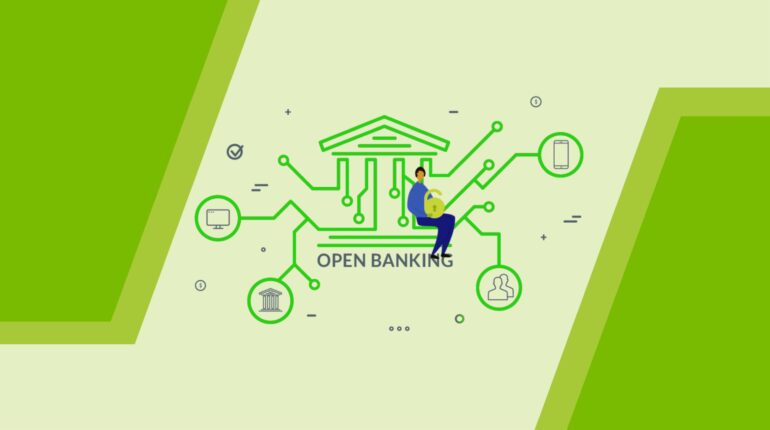TL;DR:
- Open Banking’s growth potential remains untapped, with limited user engagement and questions about its relevance.
- AI, particularly generative AI like ChatGPT, holds the key to transforming Open Banking’s trajectory.
- Integration of AI can pave the way for a groundbreaking ‘killer app’ and mainstream adoption.
- The PSD2 directive prompted banks to open APIs, with the UK leading in registrations.
- AI’s impact on Open Banking hinges on addressing challenges and redefining its applications.
- While AI’s potential is promising, its limitations in factual accuracy and intricate decision-making raise concerns.
- AI’s role in Open Banking might be more suitable for customer service rather than core financial tasks.
Main AI News:
The Evolution of Open Banking: Seizing the AI Advantage
As the financial landscape undergoes a rapid transformation, Open Banking stands at the precipice of a groundbreaking revolution. The realm of possibilities within this domain has remained largely untapped, with a mere fraction of the 156 million bank accounts in the UK engaging with Open Banking systems. While stalwart companies like Bud, Plaid, and Tink have made their mark, their progress pales in comparison to the meteoric rise of industry giants like Klarna and Revolut. Despite its potential, Open Banking still struggles to establish its presence in the public’s consciousness, with skepticism abounding about its continued relevance.
In parallel, the pervasive influence of artificial intelligence (AI) has permeated every facet of the industry, and finance is no exception. In this era of technological advancement, Large Language Models (LLMs) like ChatGPT have emerged as the indispensable tools that Open Banking has been yearning for. By integrating AI into Open Banking, the stage is set for the emergence of a revolutionary ‘killer app’ that could propel Open Banking into the mainstream. This echoes the trajectory of the MP3 player, which paved the way for the era of smartphones, reshaping user behaviors and expectations.
However, the path to realizing Open Banking’s fullest potential through AI integration is fraught with challenges that demand meticulous consideration. The trajectory of Open Banking’s evolution holds the answers to questions that shape its future.
Charting the Path Forward: Open Banking’s Unfoldment
The introduction of the PSD2 directive in 2018 marked a pivotal juncture, compelling banks to unlock their APIs for third-party authorization. Since then, a plethora of companies have embraced Open Banking protocols across the EU and UK. Notably, the UK has embraced this paradigm shift with particular enthusiasm, boasting 221 of the 559 registered third-party providers in Europe by 2022. This robust participation underscores the nation’s prowess in both banking and technology.
Interestingly, the majority of these registrations comprise Account Information Service Providers and hybrids of AISPs and Payment Initiation Service Providers. This resonates with the growing realization that Open Banking’s true value lies in its potential to revolutionize financial services rather than merely serving as an alternative to conventional payment methods. Unlike the 17 million UK users of Buy Now Pay Later (BNPL) services, the seven million engaged with Open Banking represent a smaller cohort. Nonetheless, this figure is on an upward trajectory, with projections suggesting a potential surge from 15% to 44% of the public by 2027.
A Paradigm Shift Enabled by AI: Open Banking’s Unveiling Potential
The catalyst for Open Banking’s ascent could very well be AI’s catalytic influence. However, to fully unlock this potential, an array of challenges demands resolution.
AI’s imprint on financial services is not a novel concept, with machine learning and big data integration dating back years. In fact, many of the newly-registered AISPs inherently employ some form of machine learning, even if it’s a rudimentary sorting algorithm. The transition from traditional banking logic, such as automated alerts for overdrawn accounts, illustrates the advent of AI in the financial landscape.
Nonetheless, today’s AI discourse centers around the rise of “generative AI,” spearheaded by trailblazers like ChatGPT. This AI paradigm transcends conventional rule-based systems, infusing decision-making processes with creativity and novelty. For instance, ChatGPT can seamlessly craft taglines for product launches or even produce entirely novel content. The transformative potential of such AI systems in the context of Open Banking is profound.
AI’s Promise and Constraints in the Open Banking Landscape
While AI’s potential is undeniable, its application within Open Banking warrants careful evaluation. The recent output of ChatGPT offers a glimpse into AI’s current prowess and limitations. The generated paragraph articulates AI’s monumental impact on banking, showcasing its potential to generate immense value. However, it veers from the specific focus on Open Banking, rendering it an illustrative example rather than a direct answer to the query.
Furthermore, the reliance on non-existent studies underscores AI’s limitations in discerning factual accuracy. ChatGPT lacks the discernment to validate claims through evidence, a hallmark of comprehensive article creation. This characteristic disqualifies it from tasks intrinsic to Open Banking, such as scrutinizing bank accounts for savings opportunities or assessing loan eligibility.
In this light, while AI holds promise for enhancing customer service, its current state doesn’t align with Open Banking’s intricate demands. The evolving landscape may necessitate AI’s contributions, but it appears that the trajectory of AI development falls short of addressing Open Banking’s multifaceted requirements. As much as AI’s potential beckons, it’s prudent to acknowledge that the gap between its capabilities and the exigencies of Open Banking remains significant.
Conclusion:
The synergy between Open Banking and AI presents an unprecedented opportunity for market transformation. AI’s ability to revolutionize processes, enhance customer experience, and generate novel solutions is clear. However, the evolving landscape necessitates a cautious approach. The gap between AI’s capabilities and the nuanced demands of Open Banking is substantial. While AI has potential, the market should acknowledge that a significant leap is required for seamless integration and realization of its transformative promise.

